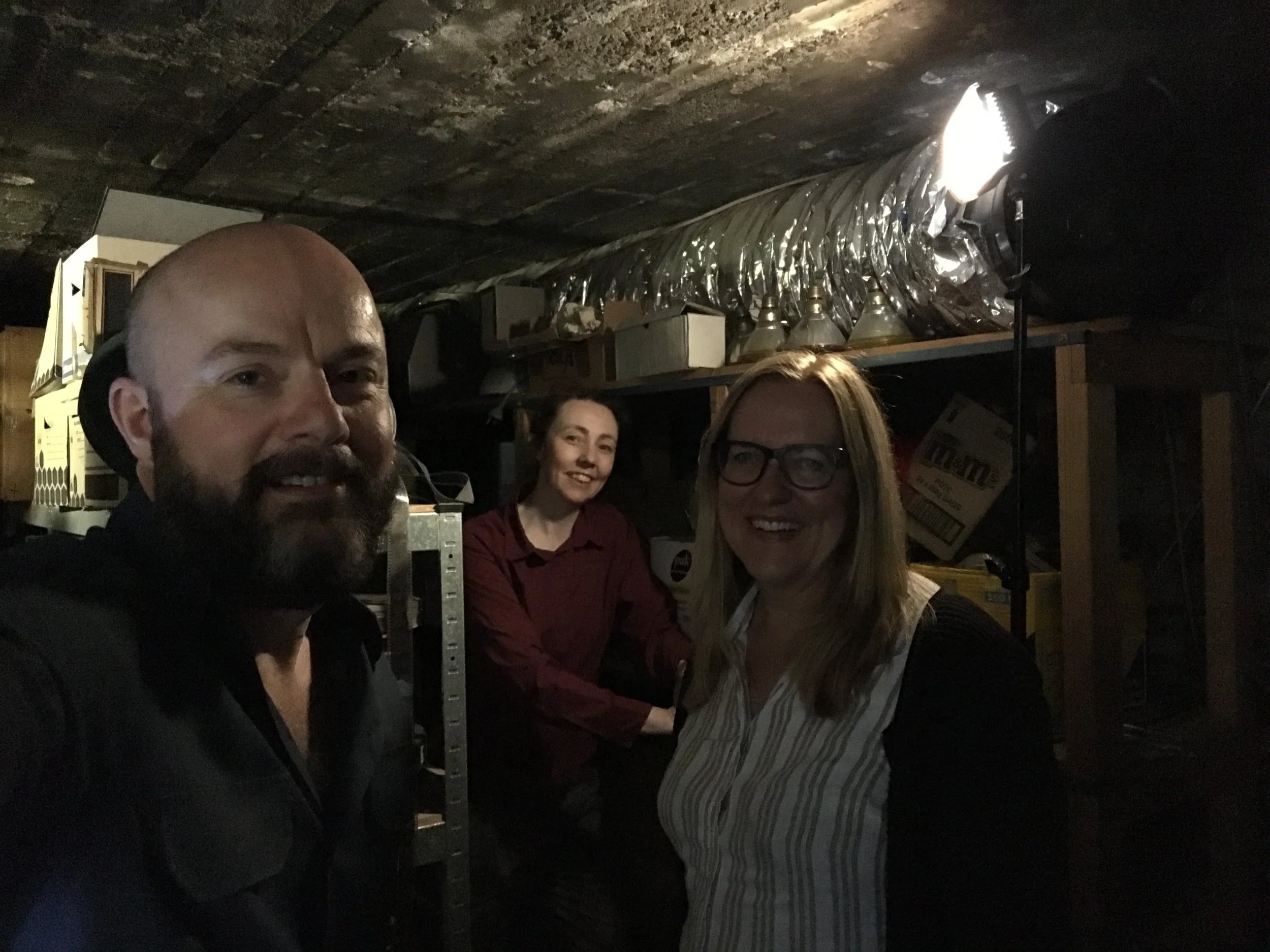The celluloid underground
This forgotten storage room at the back of an old country cinema may be the setting for a fictional reenactment but the space is real and required no art direction. In fact the biggest note on the call sheet that day was to wear expendable clothing; that and to leave any fear of insects at the door. Fortunately it didn't come to dodging spiders but my plucky crew were ready for anything as the space was confining and we did need to crouch for a lot of the time.
Nothing to hard for this crew.
Trunks of forgotten 35mm prints were out numbered two to one by stacks of 16mm film, much of it unlabelled. Another private collection holding unknown treasures. I'm always amazed and slightly terrified by these collections. They represent the tip of an iceberg that has a clock running. Film prints have been lost due to poor storage or simply because of their age in the hands of private collectors. It is true that many of these titles simply wouldn't exist at all if it wasn't for these people but it is also true that we are approaching a unique period in film history where this second generation of unofficial archivists are facing old age and loosing their ability to care for this preciouse contraband.
This 'celluloid underground' (as I like to call it) has been gathering and saving films prints from junking for decades. 'Junking' is the malicious act of putting an axe or a drill through a film print rather than let it fall into the hands of a private collector. The irony here is that largely due to digital projection, lost prints are emerging from private collections and being re-legitimised by the same entities who had previously ordered they're destruction.
Rob



